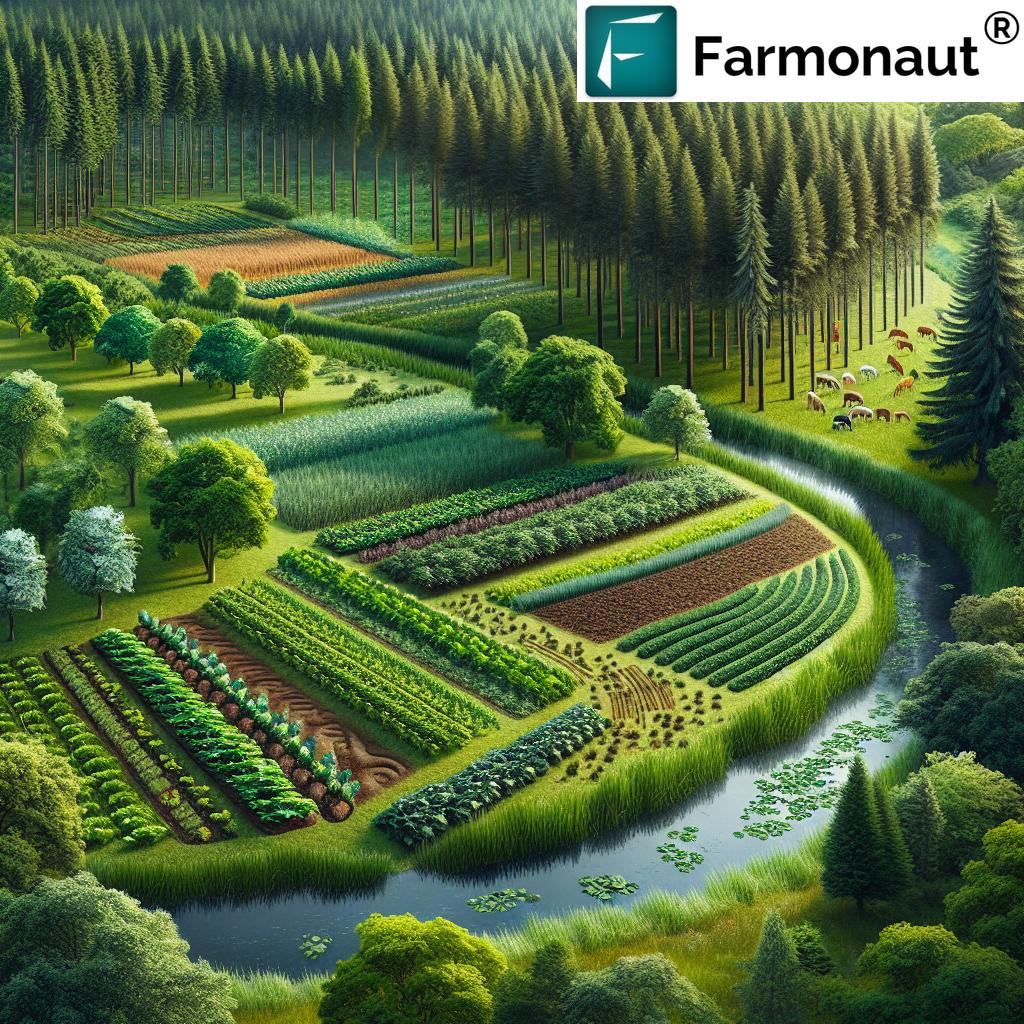Imagine transforming your agricultural landscape into a thriving ecosystem that not only enhances productivity but also nurtures the environment. Tree planting in agricultural areas can be your secret weapon.
You might be wondering how a simple act like planting trees can make such a big difference. The truth is, trees do more than just provide shade; they bring a multitude of benefits that can revolutionize the way you farm.
From improving soil health to attracting beneficial wildlife, the advantages are endless. Are you ready to discover how integrating trees into your land can boost your yield, save you money, and contribute to a healthier planet? Keep reading to unlock the powerful benefits that tree planting can bring to your agricultural landscape.

Environmental Impact
Planting trees in agricultural landscapes offers significant environmental benefits. These green giants play a crucial role in maintaining ecological balance. They improve air quality, conserve soil, and support biodiversity. Farmers can enhance their lands while contributing positively to the planet.
Tree Planting And Air Quality
Trees absorb carbon dioxide and release oxygen. This process helps to purify the air. Cleaner air improves health and reduces pollution. Agricultural landscapes benefit greatly from improved air quality.
Soil Conservation And Fertility
Trees prevent soil erosion by holding soil with their roots. They also enhance soil fertility through organic matter. This creates a better environment for crops. Healthy soil leads to better harvests.
Biodiversity Support
Trees provide habitats for various species. This encourages biodiversity in agricultural areas. More species ensure a balanced ecosystem. A balanced ecosystem is vital for sustainable farming.
Water Management
Trees play a role in water regulation. They help maintain water cycles by absorbing rainwater. This reduces the risk of flooding and droughts. Proper water management is essential for crop growth.
Climate Regulation
Trees help stabilize the climate. They reduce the effects of extreme temperatures. This creates a more consistent environment for farming. Stable climates lead to more reliable farming outcomes.
Long-term Sustainability
Tree planting in agriculture promotes sustainability. It ensures resources are available for future generations. Sustainable practices protect the environment. Farmers benefit from long-term productivity.

Economic Advantages
Tree planting in agricultural landscapes offers significant economic advantages. Farmers and landowners can benefit from increased productivity and reduced costs. Trees provide diverse income streams, enhance soil quality, and help manage resources efficiently.
Income From Timber And Non-timber Products
Farmers can earn income from selling timber products. Trees like oak or pine are valuable resources. Non-timber products include fruits, nuts, and resins. These products can diversify farm income. They also provide financial stability in tough times.
Improved Crop Yields
Trees enhance soil fertility through nutrient recycling. Leaves and organic matter enrich the soil. This leads to better crop growth. Increased yields mean more produce to sell. Farmers benefit from higher profits without extra investments.
Reduced Costs In Agricultural Practices
Trees act as windbreaks, protecting crops from harsh weather. They reduce soil erosion, preserving valuable topsoil. This minimizes the need for artificial soil amendments. Farmers save money on fertilizers and maintenance.
Enhanced Land Value
Tree planting boosts the aesthetic appeal of farmland. Landscapes with trees are often more attractive. This can increase the property value. Buyers may pay more for land with mature trees. This adds long-term financial benefits.
Carbon Credits And Environmental Incentives
Planting trees helps sequester carbon dioxide. This contributes to environmental sustainability. Farmers can earn carbon credits from this practice. These credits can be sold for additional income. Governments might offer incentives for sustainable practices.
Enhancing Biodiversity
Tree planting in agricultural landscapes holds immense potential for enhancing biodiversity. Diverse ecosystems thrive when trees are introduced. They create habitats for various species, offering shelter and food. This leads to increased biodiversity, crucial for a balanced environment. Trees support numerous organisms, ranging from insects to birds, contributing to a vibrant ecosystem. Understanding how trees enhance biodiversity can transform agricultural practices.
Creating Habitats For Wildlife
Trees provide essential habitats for wildlife. They offer nesting sites for birds and shelter for mammals. Small creatures find refuge among roots and branches. This diversity of life forms maintains ecological balance. Trees act as natural homes for countless species.
Supporting Pollinators
Trees play a vital role in supporting pollinators. They attract bees and butterflies with their flowers. These pollinators aid in crop production. Healthy pollinator populations ensure efficient pollination. Trees contribute to sustaining agriculture through this process.
Enhancing Soil Health
Trees improve soil health by preventing erosion. Their roots hold the soil together, reducing runoff. This creates a stable environment for micro-organisms. Improved soil health enhances plant growth. Trees contribute significantly to maintaining fertile land.
Increasing Plant Diversity
Trees encourage plant diversity by altering microclimates. Shade from trees allows different plants to thrive. Diverse plant life leads to a resilient ecosystem. This variety supports different animal species. Trees are vital in fostering rich plant communities.
Providing Food Sources
Trees offer food sources for various animals. Fruits and nuts are consumed by birds and mammals. Leaves and bark provide sustenance for insects. These food sources support numerous species. Trees are integral to the food chain in agricultural landscapes.

Conclusion
Tree planting in agricultural landscapes offers countless benefits. It supports biodiversity, providing habitats for wildlife. Trees improve soil health by reducing erosion. They also help retain moisture in the soil. This reduces the need for extra irrigation. Farmers can enjoy better crop yields.
Trees also capture carbon, helping combat climate change. They provide shade and windbreaks, protecting crops. This can lead to more stable and sustainable farming. Embracing tree planting transforms agricultural practices. It promotes a healthier environment and boosts productivity. Consider integrating trees into your fields.
The rewards are substantial and lasting.


